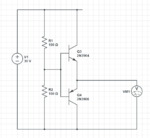Xenobius
Member level 5
Hi I have an enclosure with a 30vdc power supply inside.
I would like to add some fans to keep things cooler inside however its much simpler to buy a 15vdc fan than a 30vdc fan.
So I figured if I connect 2 in series I would split the voltage and bob's-your-uncle as they say however a friend of mind pointed out that it might not be good since a fan is inductive not resistive...
How does (if) this affect the fans in series?
Thanks
I would like to add some fans to keep things cooler inside however its much simpler to buy a 15vdc fan than a 30vdc fan.
So I figured if I connect 2 in series I would split the voltage and bob's-your-uncle as they say however a friend of mind pointed out that it might not be good since a fan is inductive not resistive...
How does (if) this affect the fans in series?
Thanks
